We are seeing glitches that come in sets and look like stacks of harmonics in the most recent lock. It looks like they can be explained as the non-linear upconversion of some 1 kHz violin modes, based on the spacing between glitches. We think that these glitches happen when the violin modes get high enough to run into some non-linearity in the sensing. I used the derivative of OMC-DCPD_SUM, since it seems like these glitches should not care about the DC value and would most likely be some kind of slew-rate limit. The 1 kHz violin modes dominate the RMS, in particular a pair at 1009.44 and 1009.487 Hz. The beat frequency between these gives a period of about 21 seconds, which is the spacing between bursts of glitches. The glitches occur when the amplitude of the DCPD derivative is highest. The amplitude has a period of 21 seconds because of the two 1 kHz violin modes. Comparing to the previous lock, when these glitches were not present, the amplitude of these two modes is no higher. But there are a number of other modes near 1 kHz and several of those are substantially higher. So they may have pushed the amplitude into the nonlinear region. Attached is a PDF showing the glitches as they appear on the summary page (they are most clearly seen at 2 kHz in Omicron), and the comparison of the 1 kHz spectrum with the previous lock which did not have these glitches. The second page shows the bursts of glitches compared to the amplitude of the DCPD derivative.
If the interferometer is up I will spend some time damping them tonight.
It is important to notice that this 2kHz glitch line has been appearing and dissapearing quite irregularly in the past, but when it is present the associated Omicron glitches are of high SNR. In fact the last time this line showed up was all the way back to 29-30th November:
* 2kHz glitch line started to show on first 29th Nov lock
* 2kHz glitch line disappears on the 30th Nov
Originally I thought that the 2kHz glitch line could have been related to PCALX roaming calibration lines, based on Evan's alog on PCALX roaming calibration line frequency changes. The 2kHz glitch line seem to start as soon as the detector locked after the PCALX calibration line at 1001.3Hz was activated on UTC 2016-11-30 17:16:00, and then the glitch line disappeared around the time the cal line at 2001.3Hz was moved to 2501Hz at 2016-11-30 22:07:00. The fact that the time coincidence was not precise made me believe that the time coincidence may have been casual. It can now be confirmed that it must be unrelated because not such PCALX roaming line was not set at 2001.3Hz during the time of the current appearence of the 2kHz glitch line.
The obvious question is if the November 2kHz high SNR glitch line shows a similar 21 second spacing between bursts of glitches. The answer is yes ,as seen next during the dissapearance of the 2kHz glitch line on the 30th Nov (attached are the original images from which this image was made):
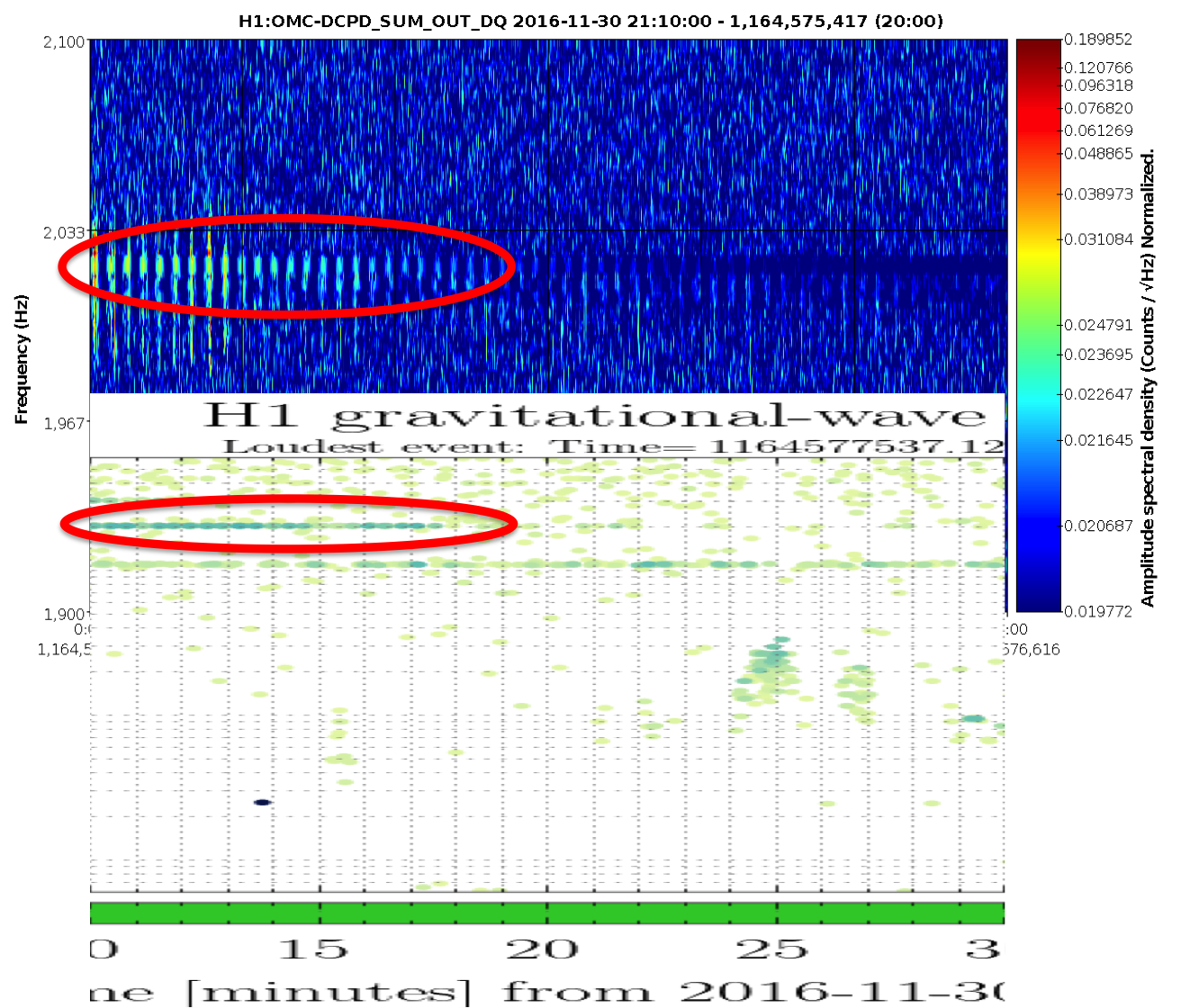
A zoom around the beginning of the above spectrum shows the ~21secs periodicity of the features:
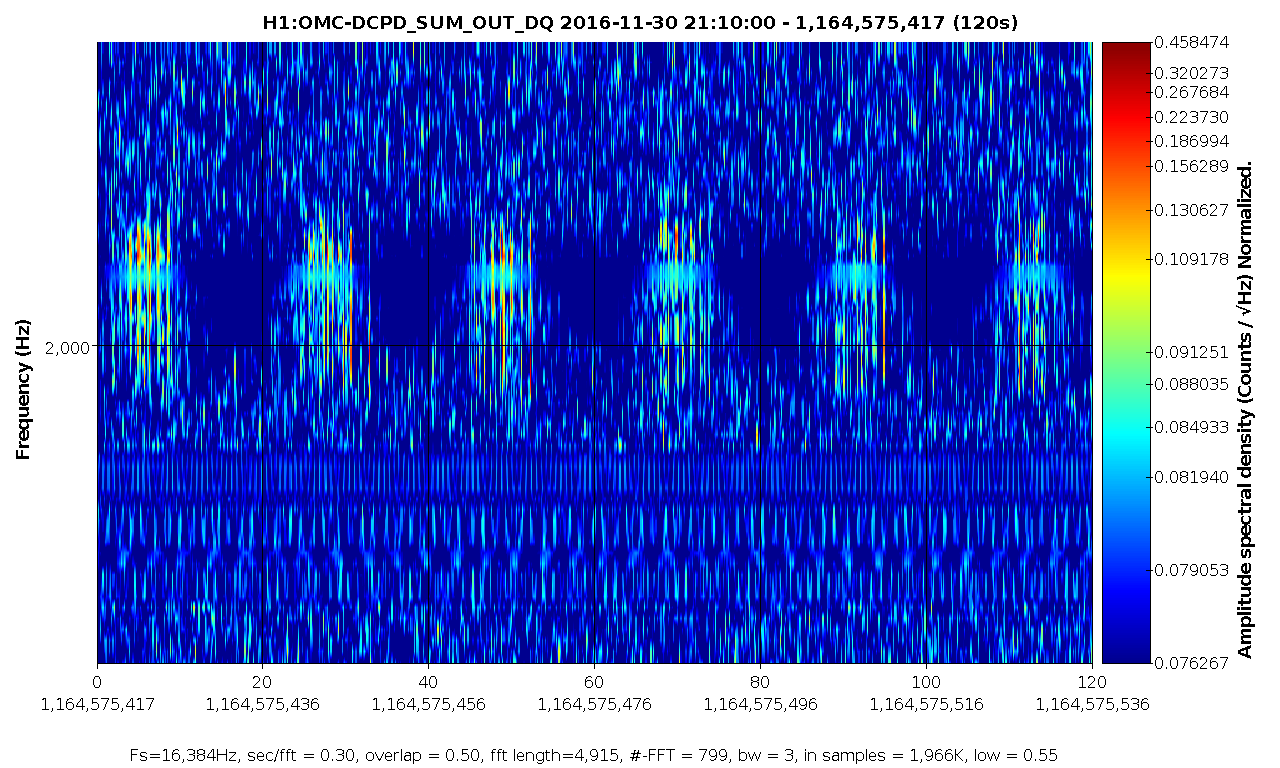
A closer look to the 2nd harmonic violin modes for 30 mins during the time of the 2kHz glitch line (in blue) and 30 mins after the glitch line dissapears (in red) shows that only few violin modes were higher during the time of the 2kHz glitch line:
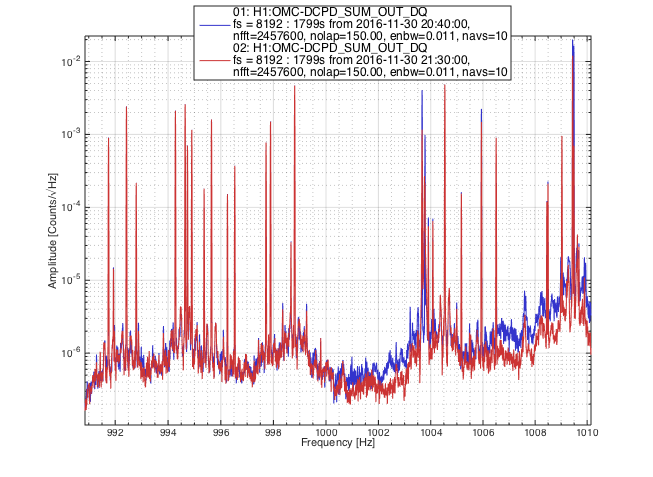
There are two cases when the blue lines are higher than the red:
* At about 1003.7Hz:
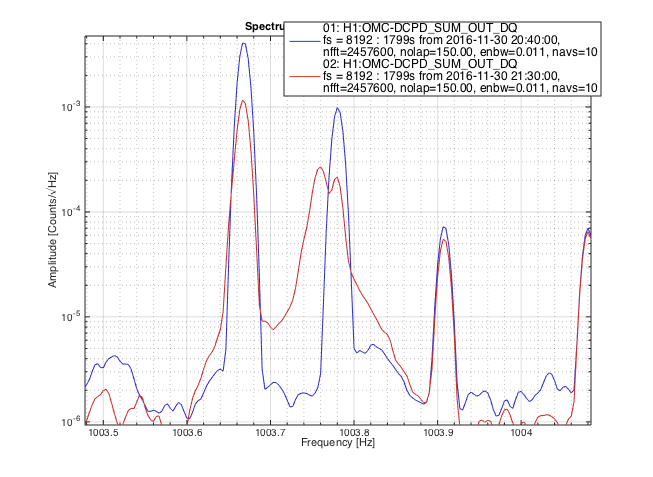
* At about 1009_4Hz:
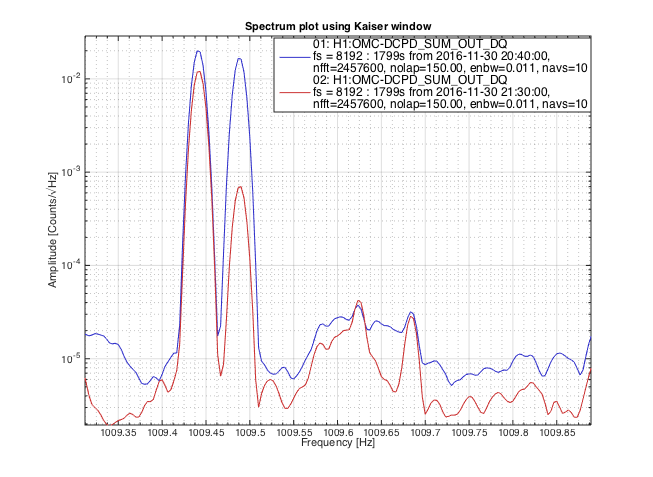
It is clear that only the pair at around 1009.45Hz would beat with a periodicity of about 20 seconds. And in this case while the lower frequency violin mode of the pair does not change much in amplitude however it is the higher frequency violin mode of the pair which increases by 30.
I have also compared the 1009.45Hz pair peaks amplitude for 4 different cases, two of them correspond to times when the 2kHz glitch line was present, and 2 other (dashed lines) to cases when the glitch line was not present. It shows how the higher frequency line has to be high enough to cause the nonlinearity for the 2kHz glitch to be present:
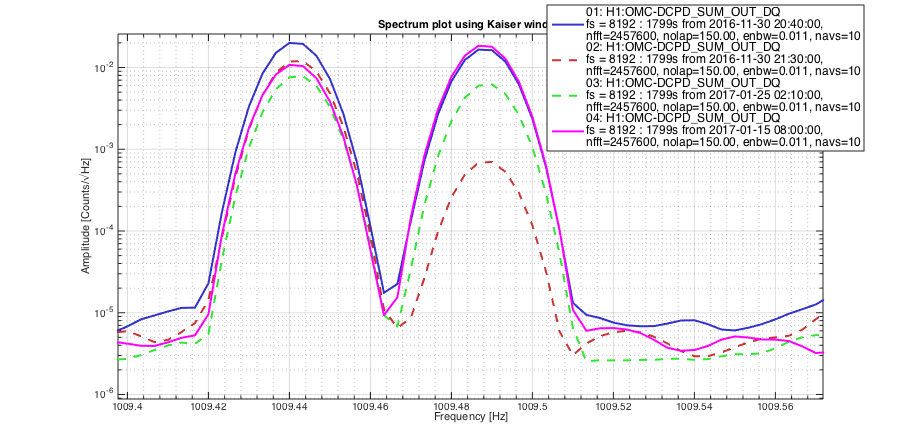
Nutsinee has just now created a damping filter for this pair of violin modes, so hopefully this will be enough to avoid growth of this peaks to the point of causing appearance of the 2kHz glitch line but only time will tell.
A small note for the operation purpose: Borja's 2kHz glitches thresholds on 1009.44Hz and 1009.49Hz correspond to
8e-13 and 6.5e-13 m/sqrt(Hz) in the (dtt calibrated) CAL-DELTAL_EXTERNAL_DQ channel in November
and
7e-13 and 4.4e-13 m/sqrt(Hz) in January.
Now that the guardian is turning the damping on, these two modes should be well controlled. But if something bad happened and the modes ring up I would suggest operators to take some time to damp the mode when they get close to 1e-12 on DARM FOM.









